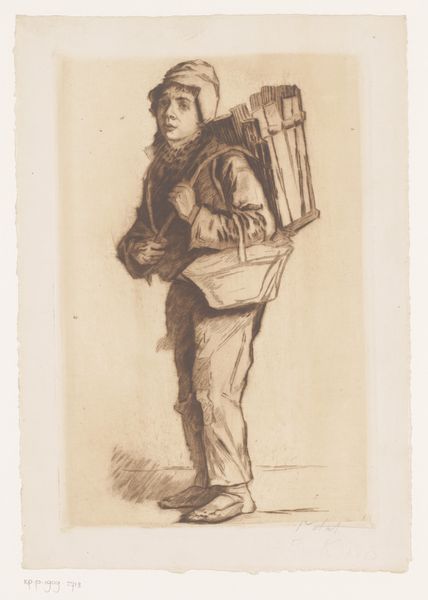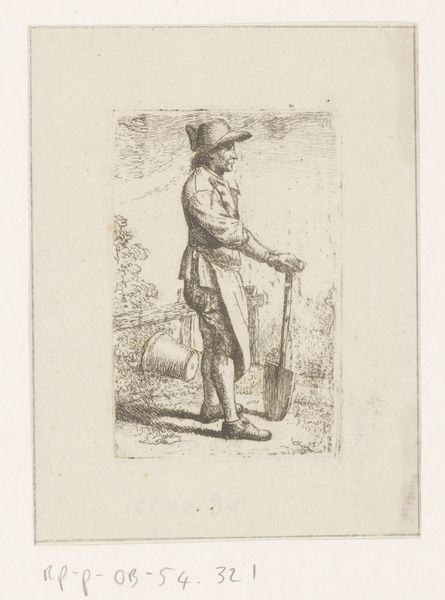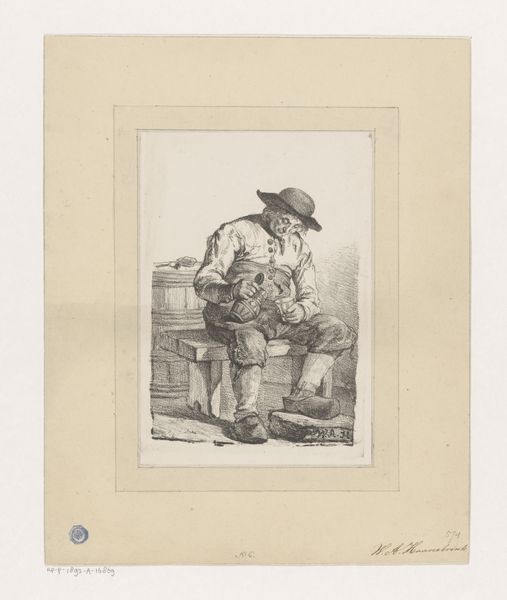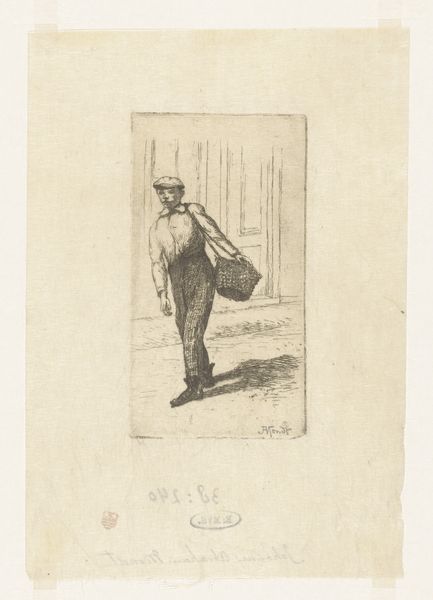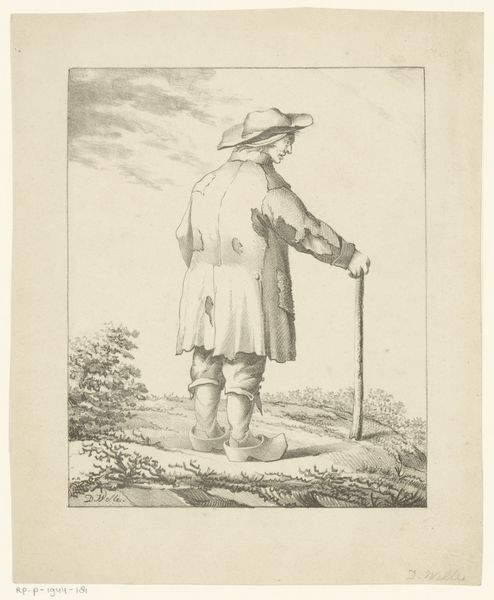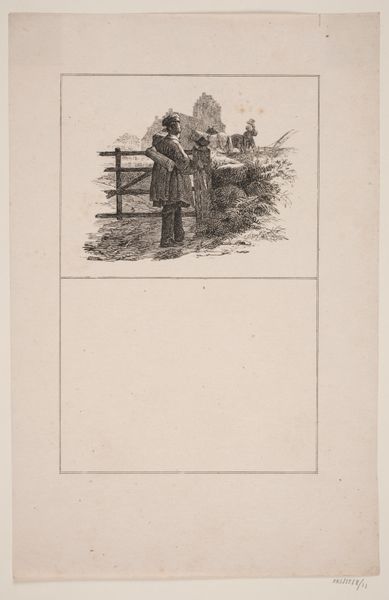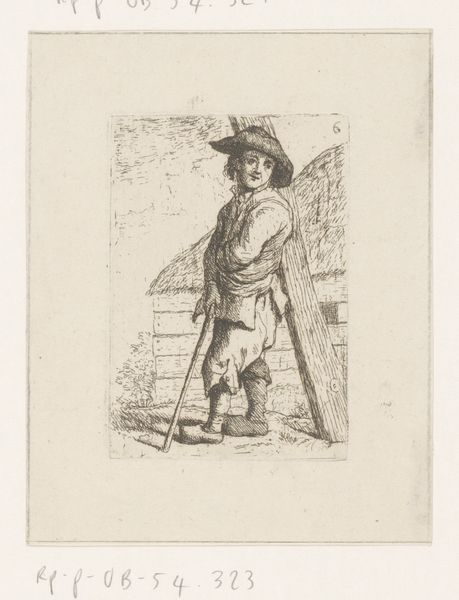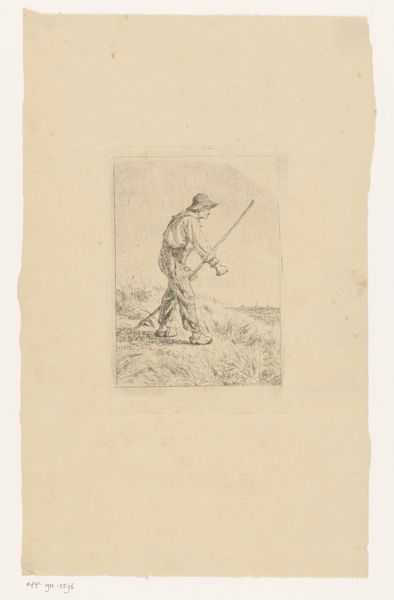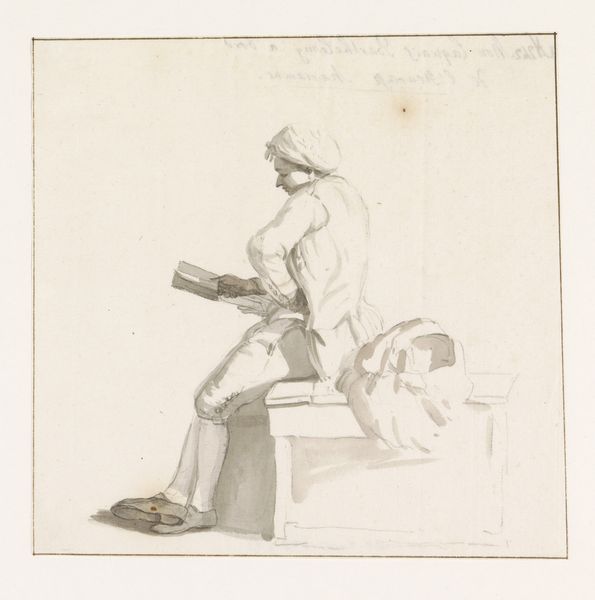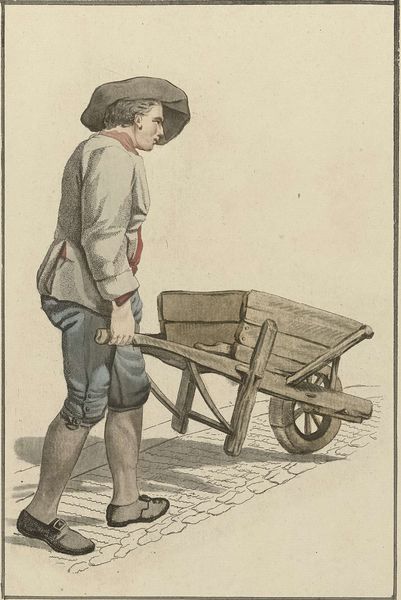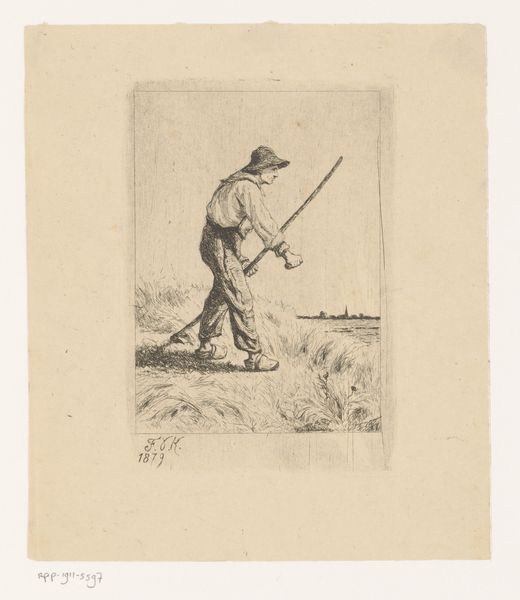
drawing, pencil
#
portrait
#
drawing
#
pencil sketch
#
figuration
#
pencil
#
genre-painting
Dimensions: height 203 mm, width 134 mm
Copyright: Rijks Museum: Open Domain
Curator: We’re standing before "Man met kruiwagen," or "Man with Wheelbarrow," a pencil drawing that might date anywhere between 1767 and 1833, attributed to Mathias de Sallieth. It resides here at the Rijksmuseum. Editor: Oh, immediately I'm drawn in by its gentle solemnity. He looks like he's carrying the weight of the world, not just whatever's in that wheelbarrow. And that muted palette! Almost melancholic. Curator: The wheelbarrow, while seemingly mundane, has powerful symbolic resonance. It signifies labor, the building blocks of society, but also potentially the burden and toil associated with existence itself. Think of its visual echoes across centuries, in art and life. Editor: Absolutely, there’s something about the angle of his body too – that slight forward hunch speaks volumes about the struggles that probably define his entire world. There’s a universal narrative of perseverance buried in those pencil strokes. The simplicity is striking, the whole scene makes him somehow more significant. Curator: It reflects the tradition of genre painting, immortalizing an everyday scene— elevating a commoner, capturing a slice of working-class life at that time, while still retaining qualities of portraiture, focusing intently on the subject's facial expressions, clothing, and demeanor. Editor: It also gives this incredible impression of captured movement, even though it's so quiet, static. The wheels are still and his legs aren’t moving, yet it feels like he’s always been walking, trudging through life’s own obstacles. Maybe there's something about seeing the scene only from the side - we aren't head on and he isn’t stopping to face us. He’s in constant motion. Curator: I appreciate how this depiction encourages us to look closer at lives we might normally overlook, revealing the quiet dignity in the routine of labor and the stories held within such routine. The very nature of Sallieth’s work is its appeal and function. Editor: It's an intimate piece in many ways. A subtle invitation to contemplate the uncelebrated lives. Perhaps, in the end, it asks us what stories we’re carrying in our own wheelbarrows, literally or metaphorically.
Comments
No comments
Be the first to comment and join the conversation on the ultimate creative platform.

